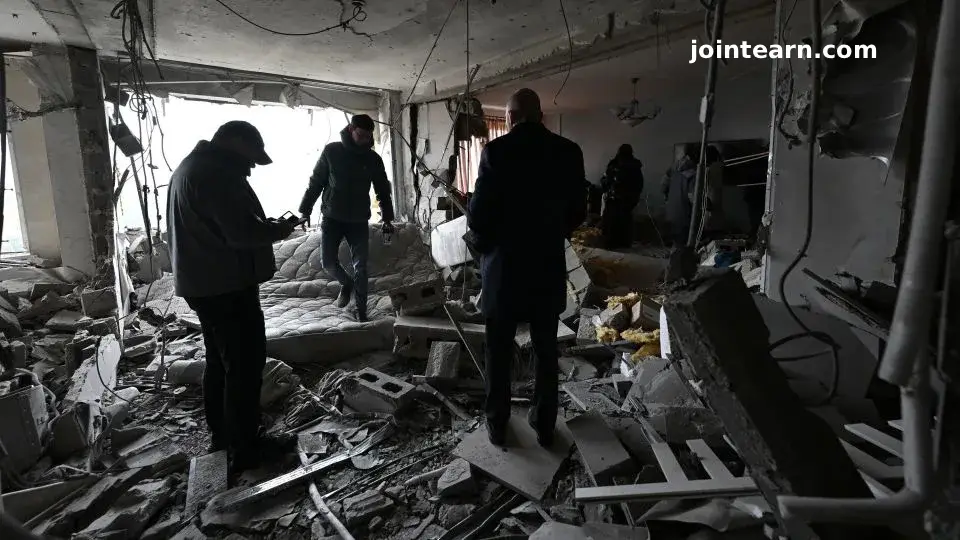
As the Ukraine–Russia war enters another phase, both militaries are locked in an intense technological race — where improvisation, innovation, and adaptability determine survival. From jet-powered guided bombs to small aircraft converted into long-range “suicide drones,” the conflict has transformed into a live testing ground for next-generation warfare.
Innovation at the Heart of the Battlefield
On land, at sea, and in the skies, both sides are constantly adapting their strategies and weapons to outwit one another. Artificial intelligence, robotics, and unmanned aerial systems (UAVs) now play a defining role in this evolving conflict, shaping modern combat like never before.
Yet, not all innovations rely on advanced technology. Some of the most impactful adaptations are surprisingly low-tech — born from ingenuity and necessity.
Ukrainian Light Planes Transformed into Missiles
Earlier this month, under the cover of darkness at a Ukrainian airfield, a team of specialists assembled a pilotless light aircraft for a 2,000-kilometer (1,243-mile) mission deep into Russian territory. Its destination: the industrial city of Dzerzhinsk, about 230 miles east of Moscow. Attached beneath the fuselage was a simple yet deadly improvised bomb.
Hours later, a fire erupted at a munitions factory producing explosives for the Russian military.
This aircraft was part of a unique program founded by an aviation enthusiast known by the call sign “Goronych.” His initiative repurposes lightweight single-seater planes into long-range, unmanned strike platforms. Instead of a cockpit, the aircraft houses additional fuel tanks, batteries, and a navigation system — extending its operational range and precision.
Now integrated into Ukraine’s elite 14th Regiment of Special Operations Forces, Goronych’s team has been behind several long-distance strikes, including an attack in Saransk — nearly 800 kilometers from Ukraine — targeting facilities that produce detonators and mines.
Russia’s Jet-Powered Guided Bombs and Evolving Air Strategy
While Ukraine has focused on small, agile aircraft and drones, Russia has pursued larger-scale innovation in its aerial arsenal. In recent weeks, Moscow began deploying a new jet-powered guided bomb — an upgraded version of its vast stockpile of Soviet-era free-fall munitions.
According to Ukrainian Defense Intelligence (DI), this new weapon, known as the UMPB-5, has a range of roughly 200 kilometers (124 miles). The upgrade allows Russian aircraft to launch the bombs from safer distances, avoiding Ukraine’s increasingly capable air defense systems.
Previously, Russia’s glide bombs had a reach of about 80 kilometers (50 miles), but the jet-powered version significantly expands operational flexibility. Ukrainian officials report that nearly 300 of these bombs were launched in a single day last week — a sharp increase from the daily average of just over 100.
The Rise of Maritime and Aerial Drones
Both nations have also accelerated their use of maritime and aerial drones to reshape naval and air combat. Ukraine, in particular, has pioneered the use of maritime drones to disrupt Russia’s Black Sea operations. These unmanned vessels have proven effective in striking strategic targets, including the bridge linking Crimea to mainland Russia.
Ukraine’s Security Service (SBU) recently unveiled an upgraded fleet of maritime drones capable of traveling more than 1,500 kilometers (932 miles) and carrying up to 2,000 kilograms (4,400 pounds) of explosives. Some variants can even deploy multi-rocket launcher systems, giving Kyiv a formidable asymmetric advantage at sea.
Meanwhile, Russia’s Defense Ministry has established an elite UAV unit known as Rubikon, tasked with experimenting and refining drone tactics. Defense analysts say Rubikon’s methods have now become standard training protocols across other Russian UAV divisions.
A Constant Cycle of Adaptation and Counter-Adaptation
The Ukraine–Russia conflict has become a showcase of rapid military evolution. Early in the war, Ukrainian forces demonstrated exceptional flexibility, using drones and commercial technology to counter Russia’s numerical superiority. But Russia has learned from its setbacks — reinforcing armor, improving camouflage, and adopting small-unit assault tactics that mimic Western doctrines.
The resulting cycle of adaptation and counter-adaptation has turned the battlefield into a proving ground for future warfare.
The Broader Strategic Picture
Despite these innovations, Ukraine still faces a severe shortage of air defense weapons and long-range missiles. Russia’s capacity to produce thousands of Shahed-type drones each month — according to Ukrainian intelligence — has further strained Kyiv’s defenses.
During his visit to Washington earlier this month, Ukrainian President Volodymyr Zelensky met with U.S. President Donald Trump, Vice President JD Vance, and other top officials, urging support for advanced air defense systems and long-range strike capabilities. However, President Trump stated that providing Tomahawk cruise missiles to Ukraine remains “off the table for now.”
In response, Zelensky has turned to Europe for increased cooperation. “Everyone who helps Ukraine with air defense systems and long-range capabilities is protecting lives and bringing peace closer,” he said during a recent address.
The Future of Warfare: Creativity Over Convention
With most weapons development pipelines spanning years, both armies are relying heavily on field improvisation — turning everyday equipment into instruments of war. From jet bombs to drone swarms, the Ukraine–Russia conflict underscores a harsh reality: on today’s battlefield, creativity can rival firepower.
As the war grinds on, it’s becoming increasingly clear that adaptability — not just weaponry — will determine who gains the upper hand in this battle of innovation and endurance.


Leave a Reply